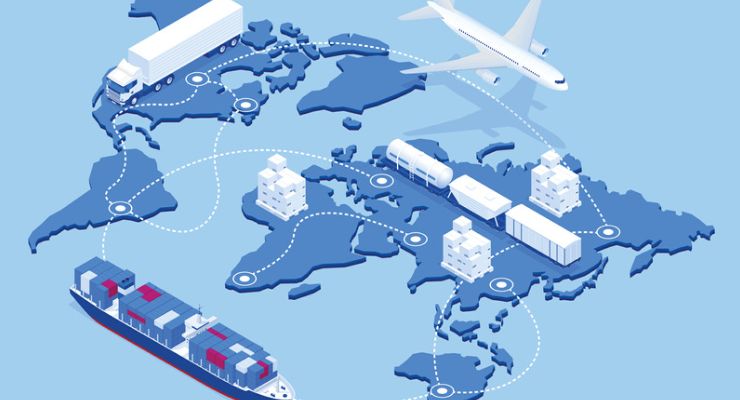Emily Newton, Editor-in-Chief, Revolutionized02.03.23
The medical device supply chain has been hit hard by various challenges, ranging from COVID-19 lockdowns to component shortages. These prolonged difficulties have made some manufacturers consider medical device onshoring.
The onshoring approach brings the products closer to those who’ll eventually use them. Reshoring medical device manufacturing is a similar option that brings production back to where it began. Both options take time to accomplish, but they could strengthen supply chains.
Then, over the next five to ten years, 20% of device makers want to branch out into creating products for neurological diseases and psychiatric disorders. Products to support womens’ health are of significant interest, too. Although 36% of companies polled are exploring that area now, that segment is expected to jump to 63% in two to five years.
This research also explored the trend of medical device companies integrating technology and data to create product-service hybrids as a new revenue source. Respondents said those efforts affected patient data management. More specifically, 56% said partnerships affected such data handling and 50% indicated that was true for investments.
Keeping an eye on the future is an excellent way to determine if it’s the right time to move forward with medical device onshoring. Even if executives agree the decision would strengthen supply chains, it must also fit the company’s direction in the relatively near future. For example, would onshoring have any negative ramifications that could restrict growth plans? Making the supply chain more resilient will bring long-term benefits, but people must take all-encompassing views of the pros and cons of onshoring or reshoring.
When you’re geographically closer to the producers of the supplies you need, it becomes easier to expand your network and visit suppliers in person. You’re able to consider whether to make an agreement with a new supplier or more closely verify that your current partner meets quality control minimums. Geographic proximity to a supplier is also helpful if you’ve put them on probation and want to engage in ongoing monitoring.
Reshoring is a significant undertaking, but several strategies can get your relocated facility up and running faster while saving money. For example, leasing gives you access to updated equipment with no risk of obsolescence. Leasing could also be a quicker way to acquire it than buying the products upfront, especially if cost is a concern.
Businesses considering reshoring medical device manufacturing should think about how often they need help getting supplies and other essentials from other countries. Moving a company back to where the production originated could relieve those pressures, provided the destination has sufficient supply chain infrastructure to keep up with demand.
Getting supplies from nearby providers also decreases the risks of supply chain interruptions caused by political unrest or port delays. That doesn’t mean a medical device manufacturer shouldn’t maintain a diverse supplier network that includes more than one country. However, supplies traveling shorter distances to reach their destinations is a significant draw that can reduce risk to the supply chain.
When production expands to other countries, manufacturers must satisfy new regulatory requirements. There’s an element of uncertainty in the unknown: Moving production somewhere else means manufacturers may ultimately contend with things they didn’t expect to face.
Consider a recent Reuters report about the difficulties posed by new medical device laws in Europe. People from five companies in the sector said their costs have increased by three to 10 times due to the changes. When manufacturers find the expenses infeasible, some let their product certifications lapse—which means hospitals can no longer use them. In other cases, medical device manufacturers have stopped selling their devices in Europe, leaving some customers scrambling to find alternative sources.
Medical device onshoring doesn’t necessarily eliminate such risks. However, it can make affected parties more likely to predict what’s on the horizon and prepare for it. Similarly, reshoring medical device manufacturing can reduce the costs of complying with new device regulations elsewhere. If that happens, businesses will have more money to devote to strengthening their supply chains and targeting other needs.
One option is to prioritize working with suppliers that consistently demonstrate outstanding reliability. Another possibility is to include failure-to-supply penalties in contracts with new suppliers. Companies can also award contracts to multiple suppliers of the same product or similar ones, giving them some cushion if or when challenges arise.
These workarounds can ease some supply chain stresses while organizations explore more extensive moves, including reshoring medical device manufacturing. Business leaders must remember onshoring is not the magic fix for ailing supply chains. While it’s an approach to consider, keep other targeted actions in mind.
 Emily Newton is the Editor-in-Chief of Revolutionized. She’s always excited to learn how the latest industry trends will improve the world. She has over five years of experience covering stories in the science and tech sectors.
Emily Newton is the Editor-in-Chief of Revolutionized. She’s always excited to learn how the latest industry trends will improve the world. She has over five years of experience covering stories in the science and tech sectors.
The onshoring approach brings the products closer to those who’ll eventually use them. Reshoring medical device manufacturing is a similar option that brings production back to where it began. Both options take time to accomplish, but they could strengthen supply chains.
Consider Current and Future Plans Before Pursuing Medical Device Onshoring
Successful medical device onshoring involves taking the time to determine how the decision aligns with current and long-term plans. A 2022 survey from Baker McKenzie indicated some medical device makers are exploring new business areas or pinpointing specific needs. For example, 51% of medical device companies focus on products to treat cardiovascular disease. Radiology, imaging, and autoimmune diseases are among the most likely growth areas in the next two to five years.Then, over the next five to ten years, 20% of device makers want to branch out into creating products for neurological diseases and psychiatric disorders. Products to support womens’ health are of significant interest, too. Although 36% of companies polled are exploring that area now, that segment is expected to jump to 63% in two to five years.
This research also explored the trend of medical device companies integrating technology and data to create product-service hybrids as a new revenue source. Respondents said those efforts affected patient data management. More specifically, 56% said partnerships affected such data handling and 50% indicated that was true for investments.
Keeping an eye on the future is an excellent way to determine if it’s the right time to move forward with medical device onshoring. Even if executives agree the decision would strengthen supply chains, it must also fit the company’s direction in the relatively near future. For example, would onshoring have any negative ramifications that could restrict growth plans? Making the supply chain more resilient will bring long-term benefits, but people must take all-encompassing views of the pros and cons of onshoring or reshoring.
Reshoring Medical Device Manufacturing Could Improve Resource Access
Although producers often explore offshoring to save money, reshoring medical device manufacturing can accomplish the same outcome in some circumstances. Consider that about 20% of global plastics industry production happens in North America. There’s a good chance your company’s medical devices need plastics to function. If reshoring means moving your manufacturing back to the continent, you could see a huge advantage.When you’re geographically closer to the producers of the supplies you need, it becomes easier to expand your network and visit suppliers in person. You’re able to consider whether to make an agreement with a new supplier or more closely verify that your current partner meets quality control minimums. Geographic proximity to a supplier is also helpful if you’ve put them on probation and want to engage in ongoing monitoring.
Reshoring is a significant undertaking, but several strategies can get your relocated facility up and running faster while saving money. For example, leasing gives you access to updated equipment with no risk of obsolescence. Leasing could also be a quicker way to acquire it than buying the products upfront, especially if cost is a concern.
Businesses considering reshoring medical device manufacturing should think about how often they need help getting supplies and other essentials from other countries. Moving a company back to where the production originated could relieve those pressures, provided the destination has sufficient supply chain infrastructure to keep up with demand.
Getting supplies from nearby providers also decreases the risks of supply chain interruptions caused by political unrest or port delays. That doesn’t mean a medical device manufacturer shouldn’t maintain a diverse supplier network that includes more than one country. However, supplies traveling shorter distances to reach their destinations is a significant draw that can reduce risk to the supply chain.
Medical Device Onshoring and Reshoring Can Bring More Familiarity
One of the often-cited advantages of medical device onshoring and reshoring is it lets companies return to a more familiar operating environment. The medical device industry is one of many facing changes in other countries that hinder manufacturing and cause missed deadlines. One automotive industry report indicated people became accustomed to microcontrollers having lead times of as few as 12 weeks. However, that time frame extended to at least 26 weeks due to supply chain challenges.When production expands to other countries, manufacturers must satisfy new regulatory requirements. There’s an element of uncertainty in the unknown: Moving production somewhere else means manufacturers may ultimately contend with things they didn’t expect to face.
Consider a recent Reuters report about the difficulties posed by new medical device laws in Europe. People from five companies in the sector said their costs have increased by three to 10 times due to the changes. When manufacturers find the expenses infeasible, some let their product certifications lapse—which means hospitals can no longer use them. In other cases, medical device manufacturers have stopped selling their devices in Europe, leaving some customers scrambling to find alternative sources.
Medical device onshoring doesn’t necessarily eliminate such risks. However, it can make affected parties more likely to predict what’s on the horizon and prepare for it. Similarly, reshoring medical device manufacturing can reduce the costs of complying with new device regulations elsewhere. If that happens, businesses will have more money to devote to strengthening their supply chains and targeting other needs.
Multiple Solutions to a Pressing Problem
A potential downside to medical device onshoring is it can’t happen quickly and requires substantial investments. With that in mind, businesses should have numerous strategies for tackling supply chain problems.One option is to prioritize working with suppliers that consistently demonstrate outstanding reliability. Another possibility is to include failure-to-supply penalties in contracts with new suppliers. Companies can also award contracts to multiple suppliers of the same product or similar ones, giving them some cushion if or when challenges arise.
These workarounds can ease some supply chain stresses while organizations explore more extensive moves, including reshoring medical device manufacturing. Business leaders must remember onshoring is not the magic fix for ailing supply chains. While it’s an approach to consider, keep other targeted actions in mind.














